Products
Plastic balls
Plastic balls are lighter than steel balls and have characteristics of being acid proof, alkali proof, heat and electric insulative, and antimagnetic. There are many kinds of plastic, and the proper plastic balls for customers requirement are used in many different industries.
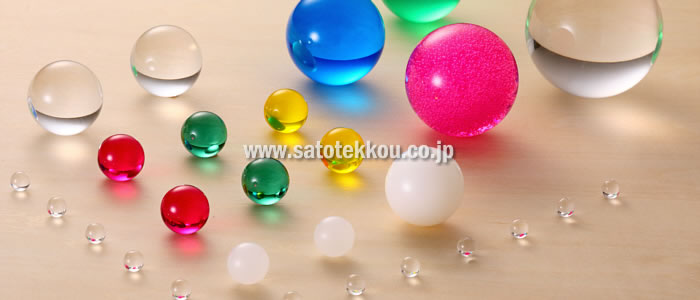

Types of Plastic Balls
-
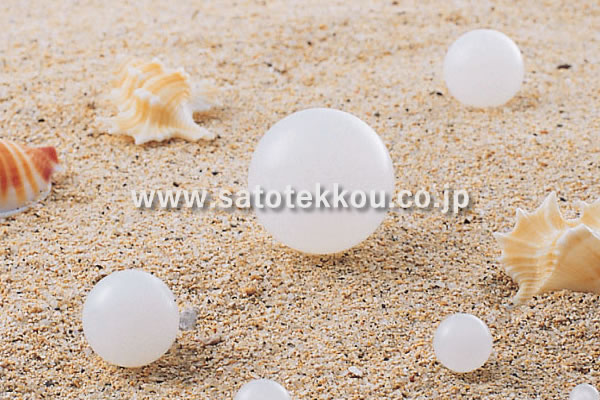
Polypropylene balls (PP-BALL)
Polypropylene balls (PP-BALL)
Nowadays polypropylene is multi-purpose plastic and has established a position as an engineering plastic.
Since it is light weight and has superior mechanical characteristics and thermal resistance, use for the parts of the automobile and home electric appliances has been increasing.
Another reason that the use of the polypropylene is increasing is the ease of which it can be recycled and it does not discharge noxious fumes when it is burnt for the disinstallation. -
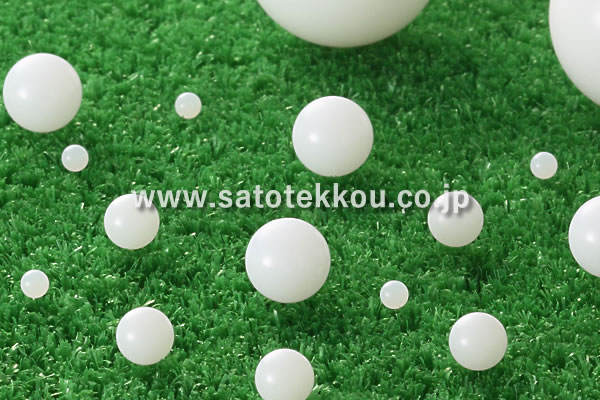
Polyethylene balls (PE-BALL)
Polyethylene balls (PE-BALL)
Polyethylene is one of the cheapest raw material in plastic material.
In many cases, it is recycled and reused. It is most familiar material in our livelihood.
It can be divided into LDPE(Low Density Polyethylene) and HDPE(High Density Polyethylene) according to its characteristics.It is often used for plastic containers because it is the lightest of all resins, has chemical resistance and water absorption.
*Our Polyethlene balls use HDPE. -
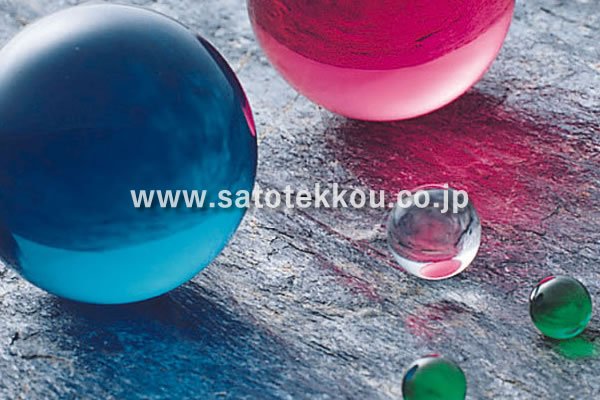
Acrylic balls (PMMA-BALL)
Acrylic balls (PMMA-BALL)
Other than acrylic, there are polycarbonate, polystyrene, polyvinyl chloride other than acrylic for the transpalent plastic currently available in market.
However, no one beats acrylic when it comes to the translucency, light resistance and mechanical characteristics.
It is also possible to manufacture bespoke acrylic ball with foam for decoration and amusement applications. -
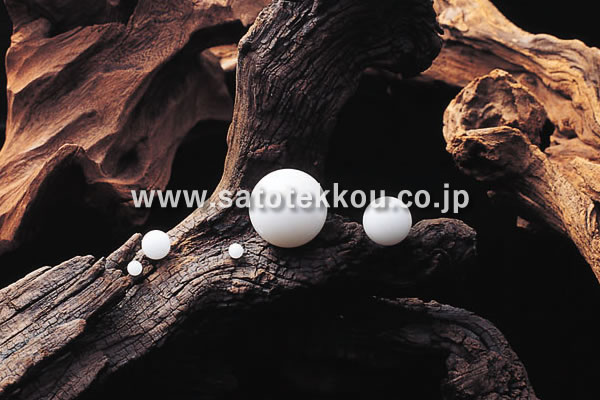
Polyacetal balls (POM-BALL)
Polyacetal balls (POM-BALL)
Polyacetal was developed by the basic concept of engineering plastic & plastic that has characteristics of "alternative metal".
It has the characteristics beyond the bound of common sense of existing plastics, and has high physicality balance among the various engineering plastic.
In addition to the frictional characteristics, Polyacetal has a special characteristic of being self lubricative which can not be seen in other engineering plastic except for fluoric plastic. -
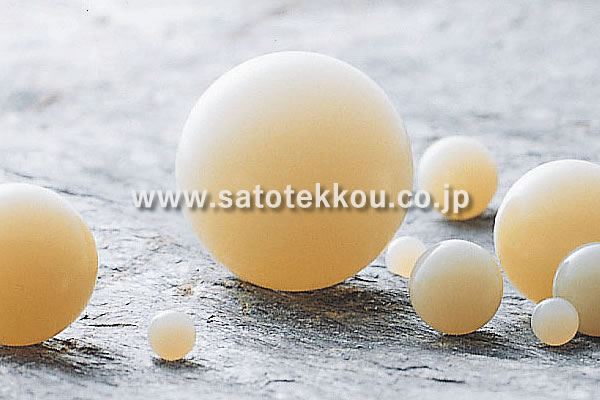
Nylon balls (PA-BALL)
Nylon balls (PA-BALL)
Polyamide is a heat reversible crystalline plastic known as Nylon. It is the trailblazer of the synthetic fiber and the oldest plastic in history.
*We handle PA66 & PA6. -
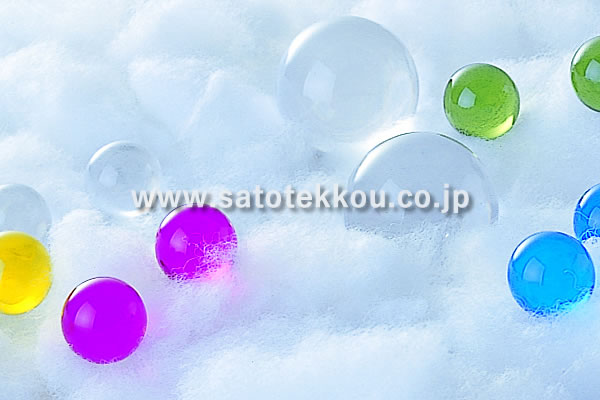
Polycarbonate balls (PC-BALL)
Polycarbonate balls (PC-BALL)
Polycarbonate is a plastic usually abbreviated as PC. Within the heat reversible plastics, it has the highest impact strength which is 150 times stronger than tempered glass.
This is the highest impact strength of all transparent plastics.
Also it is thermal resistant plastic and one of the 5 major engineering plastics. -
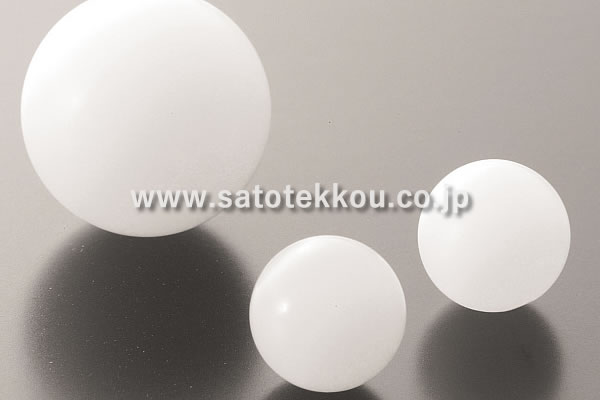
Super high-molecular-weight polyethylene balls
Super high-molecular-weight polyethylene balls
The chemical composition of the super high-molecular-weight polyethylene is exactly the same as the generic polyethylene but the amount of molecules is more than 10 times of the generic polyethylene and is classified into one of the engineering plastic that is targeted for the structural.
In addition to the regular grade, we handle conductive grade. -
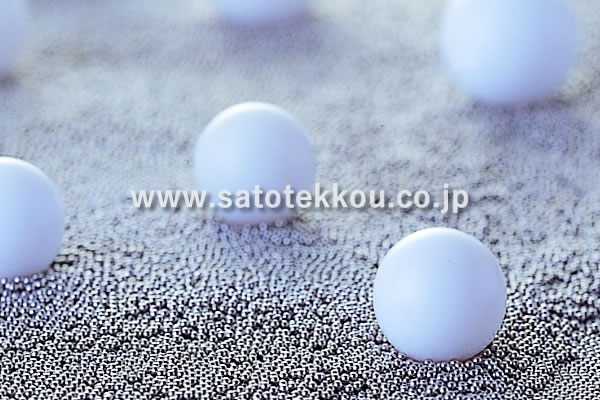
Teflon™ balls
Teflon™ balls
Teflon™ (PTFE) is the plastic that has fluorosis molecule and the official name is polytetrafluoroethylene and it has high chemical resistance, weather resistance, electrical insulative, friction coefficient (lubricity) compared with other heat reversible plastics.
Fluoric plastic is the essential material for semiconductor, precision and high-tech industries.
* Teflon™ is the registered trademark of U.S. Dupon. -
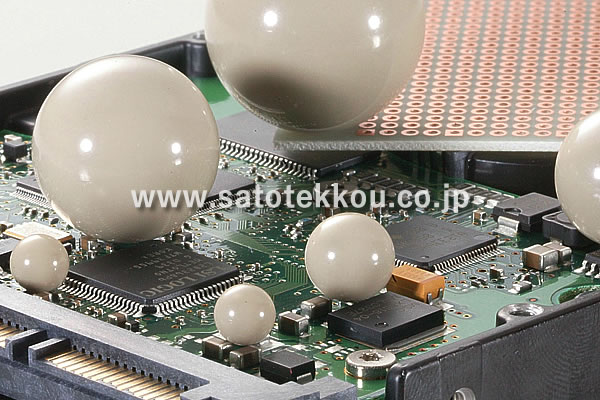
Peek balls
Peek balls
The official name of Peek is polyetheretherketone, and is a totally new super engineering developed by ICI.
It is very pure material with high thermal resistance, mechanical characteristics, chemical resistance, flame resistance, safety and sanitary (UL94V-0), low smoke amount upon burning, low elution of gas/ion/molucules. -
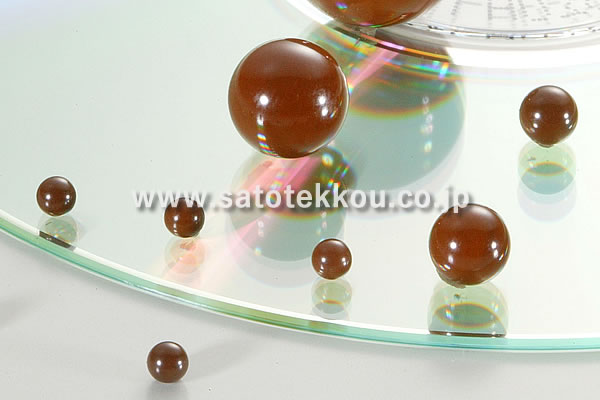
Vespel® balls
Vespel® balls
Vespel® (Polyimide) is a thermosetting plastic that has excellent thermal resistance and mechanical characteristics.The continuous using temperature of Vespel is 250℃ - 300℃ and is a symbolic existence of alternative metal material.However, the use is limited to airplane and aerospace since it is very expensive.It is starting to be used for the multi-layer computer circuit board, VTR, flexible print circuit board, precision instrument.
* Vespel® is the registered trademark of U.S. Dupon.
